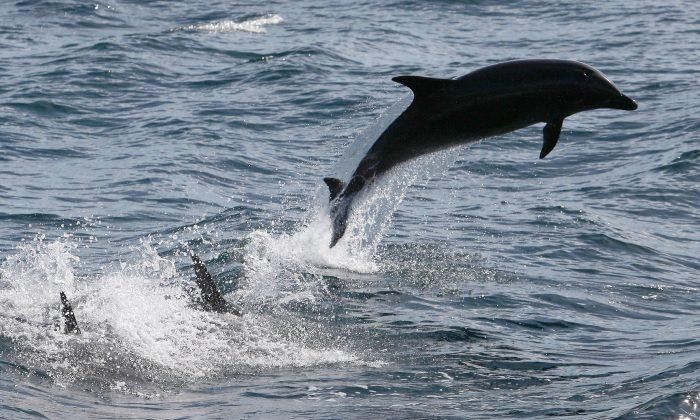The dolphin, a young male Indo-Pacific bottlenose species, was found on a beach located about two hours south of Perth, Australia. It was brought to study leader Nahiid Stephens’s house in August 2015, with bits of Maori octopus still hanging from its mouth.
Stephens said she conducted a post-mortem to find out what exactly went wrong since dolphins have been observed killing and eating octopus in the past.
“It really was a huge octopus, I just kept pulling and pulling and thought, ‘My god! It’s still coming,’” Stephens told National Geographic.
The octopus, nicknamed “Gilligan,” had a tentacle span reaching 4.2 feet.
Dolphins have the ability to separate their epiglottis—a flap of tissue that connects the larynx to the blowhole. This enables them to open their throats wider to swallow larger food pieces, according to the study.
Stephens said it went wrong for Gillian when the octopus, weighing 4.6 pounds seemed to have grabbed onto his larynx with a tentacle, thereby cutting off the dolphin’s ability to breathe. It ended up suffocating the dolphin to death.
“That octopus might have been, in theory, dead, but the sucker was still functional,” Stephens told National Geographic.
There are about 60 Indo-Pacific bottlenose dolphins that live off the coast year-round, according to Live Science.
It is also not uncommon to find octopus on the menu, but 60 percent of the dolphins seen eating it were female.






Friends Read Free